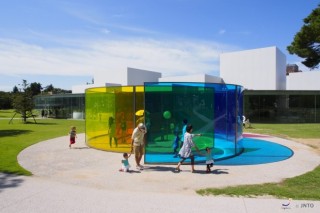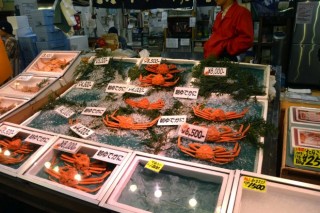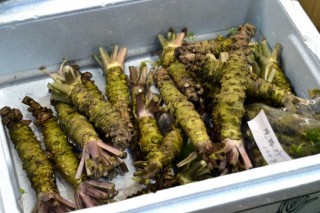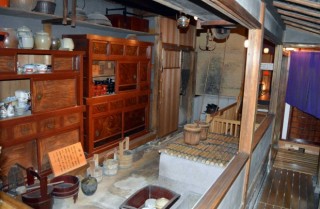Loading
Search
▼ Kanazawa: Visiting a Cultural Treasure
- Category:Tourism
Standing on the ramparts of the partially rebuilt and impressive Kanazawa castle, one can look out over this lovely, prosperous city to the gleaming sea of Japan and the rugged Noto Peninsula. I was there in October and foliage on the mountains to the east was just beginning to turn.
Kanazawa struck me as a delightful place to visit. It’s a small city of roughly 500,000, known for its traditional arts and crafts and preserved historical districts. It is sometimes referred to as a “little Kyoto”, but it more intimate and, perhaps, welcoming and convivial, and not at all as heavily touristed.
That may change soon with advent of the Shinkansen bullet train expansion scheduled for this spring to the new redesigned Kanazawa station, which will make the city an easy 2.5-hour ride from Tokyo. The city’s highlights for visitors include a central market, spreading out in covered arcades. Kanazawa is famous for the beautiful (and expensive) crabs that were on sale.
Dizzying arrays of mushrooms were displayed and showed up in almost every meal. Fresh wasabi was selling for about $6 per root. Travelers can lunch in one of the market’s restaurants on the quality sushi for which the city is known.
It’s a short cab ride form the market through winding streets filled with enticing shops, bistros, and cafes to Higashi Chaya, one of the city’s three atmospheric entertainment districts where geisha work in specially designated teahouses. There are still traditional geisha in Kanazawa but as is the case in other parts of Japan they are cloistered and mostly inaccessible, although they do perform in Kanazawa at New Year’s for the public in the preserved Shima Teahouse that has been turned into a museum.
The Teahouse has an intimate, antique feel. The rooms are small, the ceilings low, the hallways dark, narrow, and sloping. The stairs are very steep. Hair ornaments and various geisha accessories are on display, as are the instruments on which the geisha perform. The tatamis have a spring to them, a soft under-layer, which I was told was specially constructed for the elaborate dances that the geisha do.
The Teahouse has an intimate, antique feel. The rooms are small, the ceilings low, the hallways dark, narrow, and sloping. The stairs are very steep. Hair ornaments and various geisha accessories are on display, as are the instruments on which the geisha perform. The tatamis have a spring to them, a soft under-layer, which I was told was specially constructed for the elaborate dances that the geisha do.
Another short cab ride will bring you up a hill to the high point in the city to the castle and the magnificent Kenroku-en Garden (ranked as one of the three best gardens in Japan). You can wander on winding paths through mossy woods of beautifully sculpted trees. A lush waterfall, heard before seen, empties into one of the garden’s two enchanting carp-filled ponds.
Kanazawa’s beautifully designed 21st Century Museum of Contemporary Art is a short stroll down the hill from the garden, as is the Prefectural History Museum, the Prefectural Museum of Art, and the Honda Zohinkan, which exhibits samurai weapons and armor, and paintings and calligraphy.
All in all, Kanazawa is a great city to explore. It has a deep illustrious history bewitchingly entwined with its contemporary, sophisticated feel.
By Kenneth Wapner
Kanazawa’s beautifully designed 21st Century Museum of Contemporary Art is a short stroll down the hill from the garden, as is the Prefectural History Museum, the Prefectural Museum of Art, and the Honda Zohinkan, which exhibits samurai weapons and armor, and paintings and calligraphy.
All in all, Kanazawa is a great city to explore. It has a deep illustrious history bewitchingly entwined with its contemporary, sophisticated feel.
By Kenneth Wapner
- February 25, 2016
- Comment (0)
- Trackback(0)





